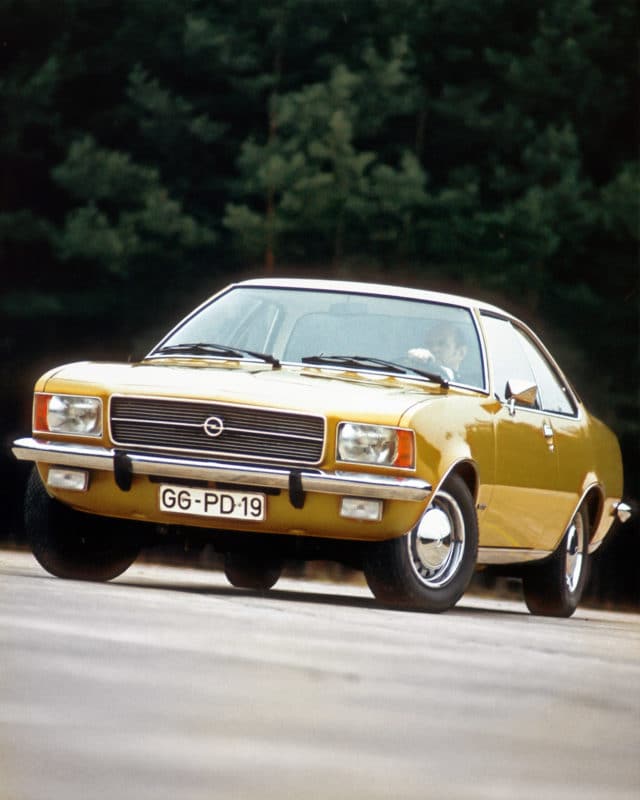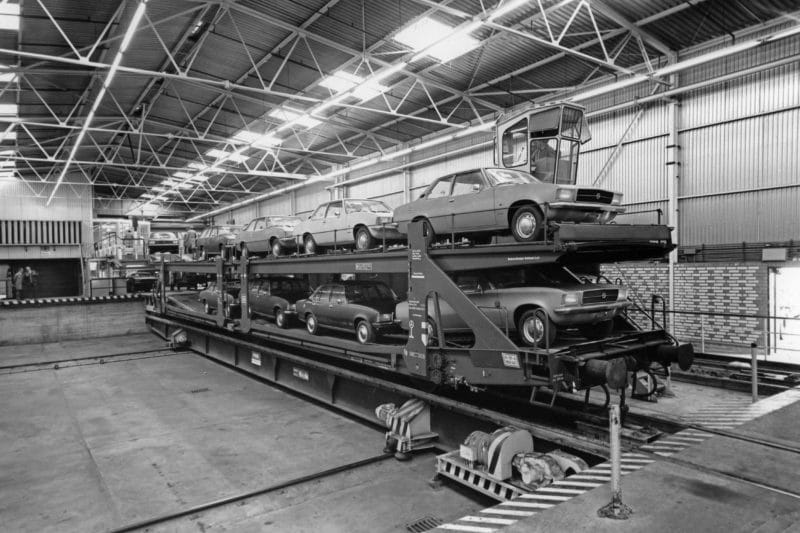The Opel Rekord D will soon celebrate its fiftieth anniversary. In November 1971, Opel started series production of the car, which had to uphold Opel's honor in the large middle class and became a welcome guest. The Opel Rekord C had therefore done its work with verve within the domain where Opel had been represented for years. He had become a millionaire and he passed this legacy on to the Rekord, which emphatically broke with the design style of its predecessor.
In terms of chassis configuration, the Rekord D was based on the C. Opel gave the new Rekord generation a new suspension tuning. This led to improved and more dynamic handling. However, Opel completely redesigned the body. The body design gave the Rekord D a tall signature and a wave of civility. And he carried it out with dignity.
Strong competitive field
The Rekord D. Not only was he faced with the task of successfully taking over from the predecessor, the playing field in which that happened had also changed over the years. Meanwhile, the Japanese put more than a big toe in the water. The Toyota Mark II 2000 was a very serious competitor, and Datsun and Mazda also rattled more and more emphatically at the gate within the broad middle class of the 504s. In addition, Europe had the necessary in-house to not make it easy for the Opel. A few examples. Peugeot had great success with the XNUMX, and with the launch of the Opel Rekord D, Ford prepared the Consul and the Granada for their market debut. And then there was the British GM sister Vauxhall, which was about to launch the new Victor (FE series). This new generation also had the necessary cosmetic features of the Rekord D. And then GM also launched the Ranger B. It was the more luxurious cosmic twin version of the Rekord D (and the Commodore B), and was produced with, among other things, the four-cylinder Opel CIH. engines available. So get on it. Within that playing field, the Rekord was allowed to try its luck.
Extensive program
Opel took a proven recipe from the stable: a variety of delivery options, both in terms of motor and equipment. In addition, the Rekord D was again available in several body styles: the classic Stufenheck with two or four doors, and the three- or five-door Caravan (or Car A Van). For business use there was also a delivery version of the Rekord: a three-door station without rear side windows. At the other end of the Rekord D spectrum was the beautiful coupé, a showpiece in the Rekord D program. The Rekord D therefore covered a considerable price range and area of use with all its variations, and that was one of the secrets of its forthcoming success. The Berlina and the Sprint versions were the most desirable series versions.
Safety
Opel made a leap in passive safety compared to the predecessor with the Rekord D (also referred to as Rekord II, to avoid confusion with the D for diesel). At the front, a crumple zone allowed the forces of a head-on collision to be diverted away from the occupants. Reinforcements in the sides and roof completed the protection and safety all around. The braking system consisted of discs at the front and drums at the rear, the circuit was separated.
Engine range
The petrol engines of the Rekord D were further developments of Opel's well-known CIH four-cylinder with the camshafts high in the block, at the level of the valves. These engines had already more than proven themselves: at the time of the introduction of the Rekord D, Opel had already produced two million. The basic version was a 1,7 N engine with 48 kW (66 hp), the S engine delivered 61 kW (83 hp). Other CIH engines were the 1.9 N (from 1975) and the 1.9 SH engine. The largest available petrol engine in the Rekord was the 2.0 S with 100 hp, which became available from 1975. The 1.7 S disappeared from the program that year, the 1.9 N replaced it. That engine change was prompted by environmental legislation at the time. The motors could (depending on the version) be combined with steering and floor switching. The Opel Dreigangautomatik from GM Strasbourg was also on the program. The 1.7 N could not be equipped with this, depending on the market, all other engine choices could.
No six-cylinder
A six-cylinder engine was omitted for the Rekord D. As far as the Rekord is concerned, a six-cylinder had been out of the program since the summer of 1968. However, if you wanted an Opel in Rekord format with a six-cylinder, you could already go to the beautiful Commodore models for a while. Speaking of which: the Commodore B based on the Rekord D appeared in the spring of 1972, as a successor to the Commodore A that had been in the Opel program since 1967.
Diesel: the first from Opel
The Rekord D was also the first Opel passenger car to be available with a diesel engine. This came on the market in September 1972. This happened after Opel (with some record runs at Dudenhofen) tested the engine in a special GT. For that occasion, the engine delivered 90 horsepower to the crankshaft. In the Rekord D, the new diesel engine delivered 44 kW (60 hp). The Rekord was good for a top speed of 135 km/h with this engine. This Opel Rekord 2100 D could be recognized by the bulge in the hood. Because of the overhead camshaft and the modified cylinder head, the OHC diesel engine was slightly higher in construction than the petrol engines. For some markets, the Rekord D was also available with the 1974 diesel engine (2.0 hp, top 55 kilometers per hour) from model year 130 for tax reasons.
Millionaire, mission accomplished
There is much to tell about the Rekord D, which remained in production almost unchanged until mid-1977, certainly in an optical sense. It was an excellent, well-proportioned and trouble-free business car that could satisfy the wishes of many. And he became a millionaire, because on September 7, 1976, the millions milestone reaches. To celebrate, Opel released the Rekord Millionär. This special model was an extra decorated Berlina version with the 2.0 S engine. Other special versions during the last construction period were, for example, the Maharadscha and the Sport. In August 1977, the Rekord E took over. The extremely sympathetic Rekord D was allowed to retire after a production number of 1.128.976, and managed to equal the success of its predecessor with honors.

















The jump to Diesel was daring, but necessary. Until 1972, you could only go to Peugeot and Mercedes for a diesel. Of course there were some cars with Perkins engines for sale, including the specially ordered diesel taxi versions of the Rekord C and Kapitän B, but that was a compromise.
Angry tongues claimed at the time that the diesel engine was a petrol engine with a modified head, but that was nonsense. No part was interchangeable. The Opel diesel engine used Ricardo Comet-V swirl chambers, while Mercedes and Peugeot (Indenor) stuck to prechambers. That gave the Opel a rougher run, but also a better fuel economy.
The Opel diesel arrived just in time for the oil crisis. But he could not push Peugeot and Mercedes out of the market, the lifespan was more limited. The Opel 2.1D and later 2.3D had problems with the main bearings around 300.000 kilometers. Undoubtedly a result of the hard beech that was released on the pistons by the pre-chamber construction. The later Opel diesels were actually copies of GM sister company Isuzu, but they were actually just better.
That "power bulge" on the hood of the diesel is cool.
Wouldn't you want that hood on your petrol car?
Ugly, characterless car. Since then, Opel has stopped building attractive cars such as the GT or the Manta of the first generation.
This was the last great stately Record. At the next record, the contraction of the bodywork had already started and the case was retracted.
There is a crash test on Youtube between this model and a Saab 99 from the 70s, at walking speed, rather vulnerable front of the Opel, while the Saab99 came off without damage.
In terms of quality, this Record was otherwise a good problem-free car.